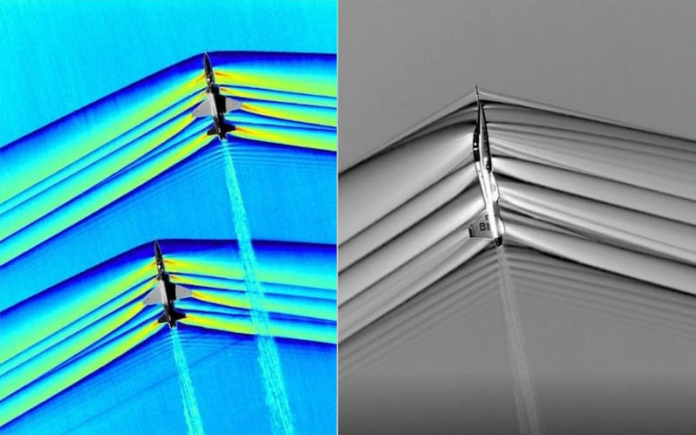NASA has released three breathtaking air-to-air images of a never-before-seen supersonic shock wave interaction. The three images depict two T-38 Talons piercing the sky. Despite being shared on Wednesday, the images date back to March 2019, when the American space agency successfully tested advanced air-to-air photographic technology in flight, capturing the first-ever images of shockwave interaction. A T-38 is a two-seat supersonic jet trainer with twin engines.
NASA said on Instagram, “Who knew breaking barriers could look so good?” It explained that when aircraft fly faster than the speed of sound, shockwaves travel away from them and are heard on the ground as a sonic boom. While the first two images have been colorized, the third has been left in its original monochromatic state.
View this post on Instagram
“These images are the result of an updated camera system aboard one of our research planes,” according to the agency. “Researchers use this imagery to study shockwaves as part of our effort to make sonic booms quieter, which could pave the way for supersonic flight over land in the future.”
NASA stated in a separate note on its website that the two T-38s are approximately 30 feet apart, with the trailing aircraft flying approximately 10 feet lower than the leading aircraft. This was the first time in flight that the flow of shock waves from both aircraft, as well as the interaction of the shocks, could be seen.
In 2019, Dan Banks, senior research engineer at NASA Armstrong, stated, “We’re seeing a level of physical detail here that I don’t think anybody has ever seen before.” “Looking at the data for the first time, I think things turned out better than we could have hoped. This is a significant step.”
According to the agency, one of the most difficult aspects of the series was the timing. NASA flew a B-200 equipped with an updated imaging system at around 30,000 feet (9,144m), while the pair of T-38s had to not only stay in formation, but also fly at supersonic speeds at the precise moment they were directly beneath the B-200.
The images are the result of all three aircraft being in the exact right place at the exact right time, as determined by NASA’s operations team.
NASA researchers use these images to study shockwaves, which will aid in the design of the X-59 Quiet SuperSonic Technology X-plane. While X-59 will fly supersonic, it will produce shockwaves in such a way that only a quiet thump may be heard, said the agency.













